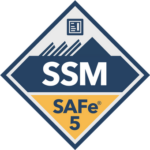Show it rather than write it.
For years I’ve been taking a visual approach to documenting requirements, which helps stakeholders better grasp complex material. But don’t take it from me, The International Institute of Business Analysis (IIBA), the Business Architect Guild, and many seasoned professionals also recommend this approach. For instance, I recently portrayed a long-term plan (target operating model) following this less-is-more strategy that got immediate agreement
Lengthy documentation and too many conversations get people lost in the details.
Start broad; go deep. If you want people to not only read your material but also “get it,” use visuals in your target operating models. Tables, diagrams, coupled with properly-formatted text can work wonders with your documentation.
There are two primary reasons why most analysts should follow this approach with their target operating models and complex requirements:
- Reason #1: People skim before they commit, and you want to immediately hold their interest and let them know they can “handle” the material in a reasonable time period.
- Reason #2: Lists, tables, and diagrams are easier to digest than large paragraphs of text.
Keep your documentation simple, clean and people will engage with your target operating model and requirements more effectively.
Reason # 1: People Want to Know What They’re Committing to Before Proceeding.
In today’s fast-paced world, the first thing people do when seeing a document (or email, or tweet, or <insert X>) is to skim the material.
They want to know if they 1) have the time to review your material, and 2) will be able to readily understand it. Give your reader easy to consume chunks to let them know it’s manageable. They’re time is valuable (as is yours in needing to explain).
Even the most complex of processes can be broken down into easy to manage chunks.
Diagrams and matrices can play a key role in any model or document. They guide the reader. A well-formatted document and a clean model play an important—an under appreciated, in my opinion—value in communicating complex material.
Reason #2: Lists, Tables, and Models Move Readers Through Your Material.
Use less words.
A simple, structured data table can convey complex information very effectively. A long, detailed paragraph will most likely be skipped (or skimmed).
A well-organized table will be consumed.
Crisp formatting is essential.
Keep your boxes aligned. Use clear legends. Keep your text succinct.
Clean formatting shows professionalism and that you care about your material.
Everyone appreciates getting the big picture, even if wanting, or needing, to understand the details.
Guide your reader through complex material by setting context and crafting a well-organized document.









Leave a Reply